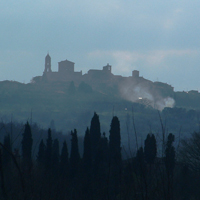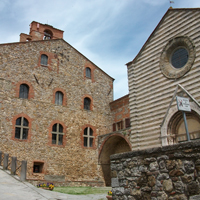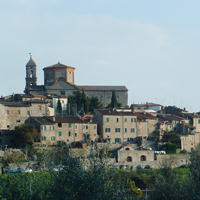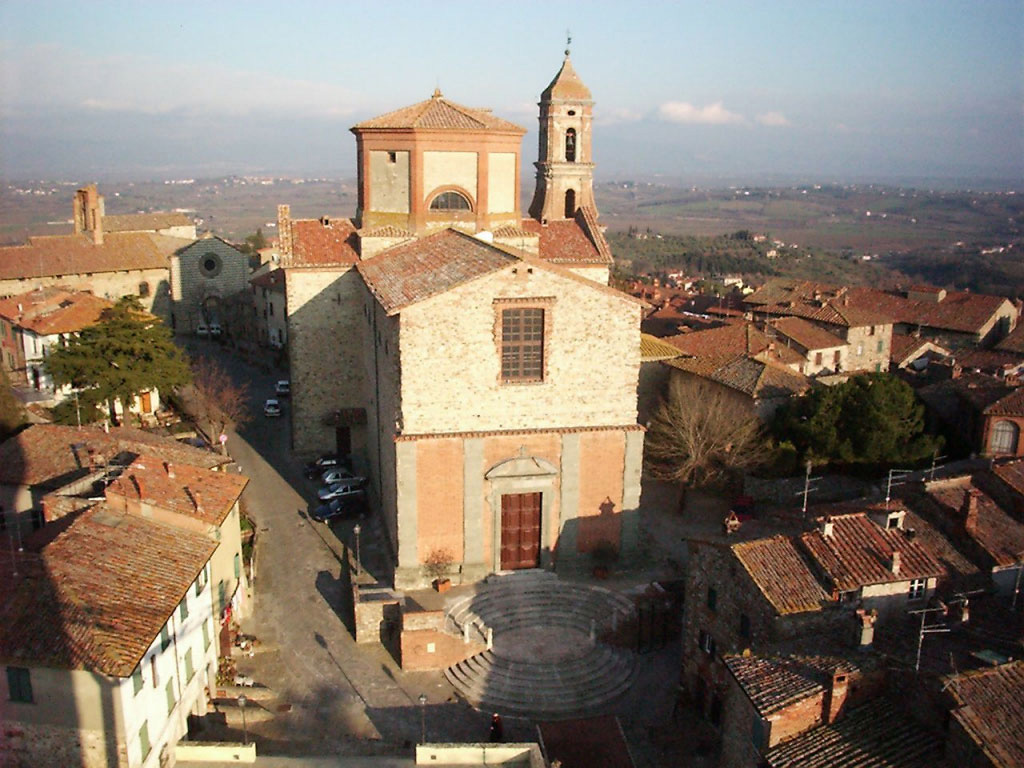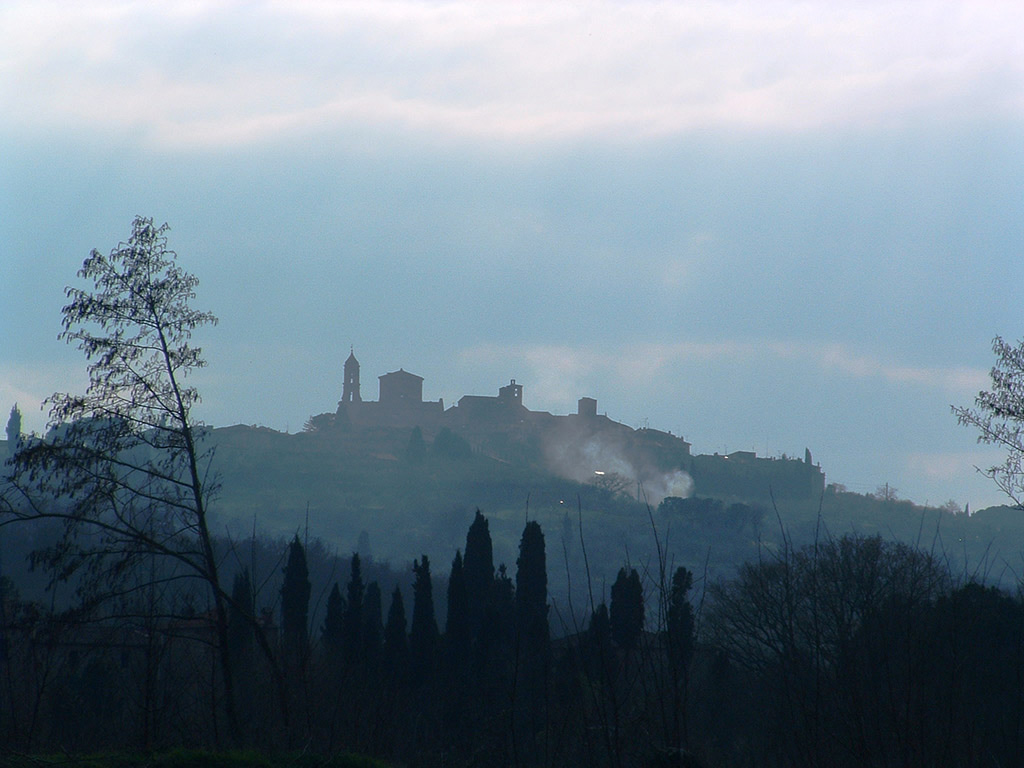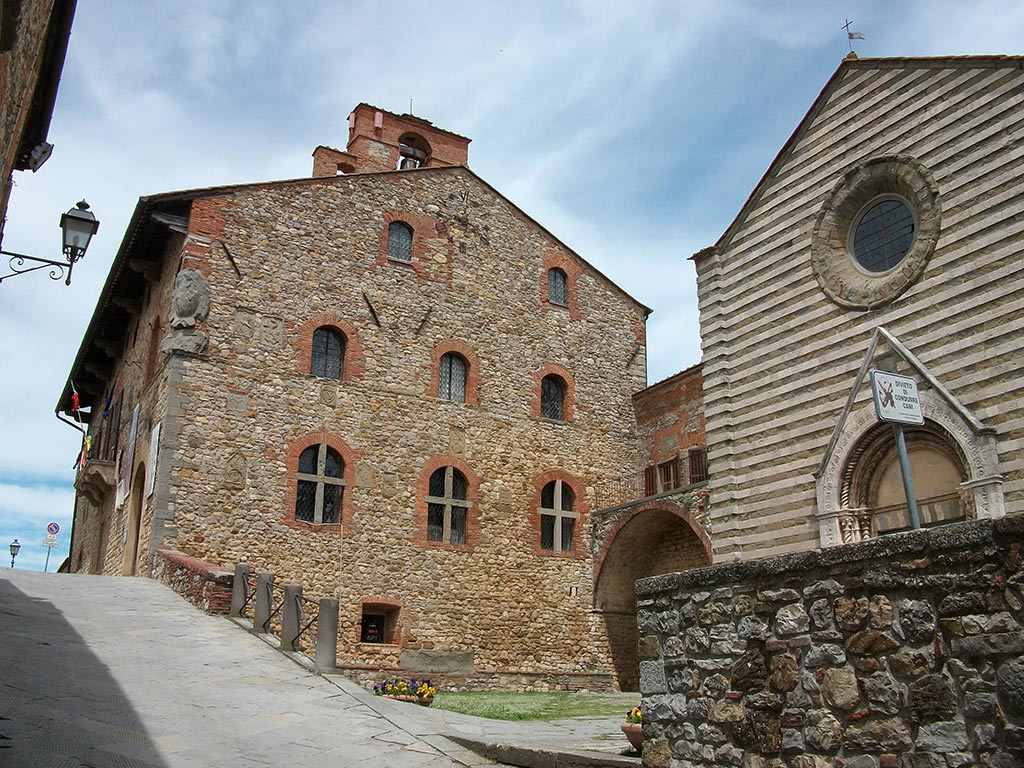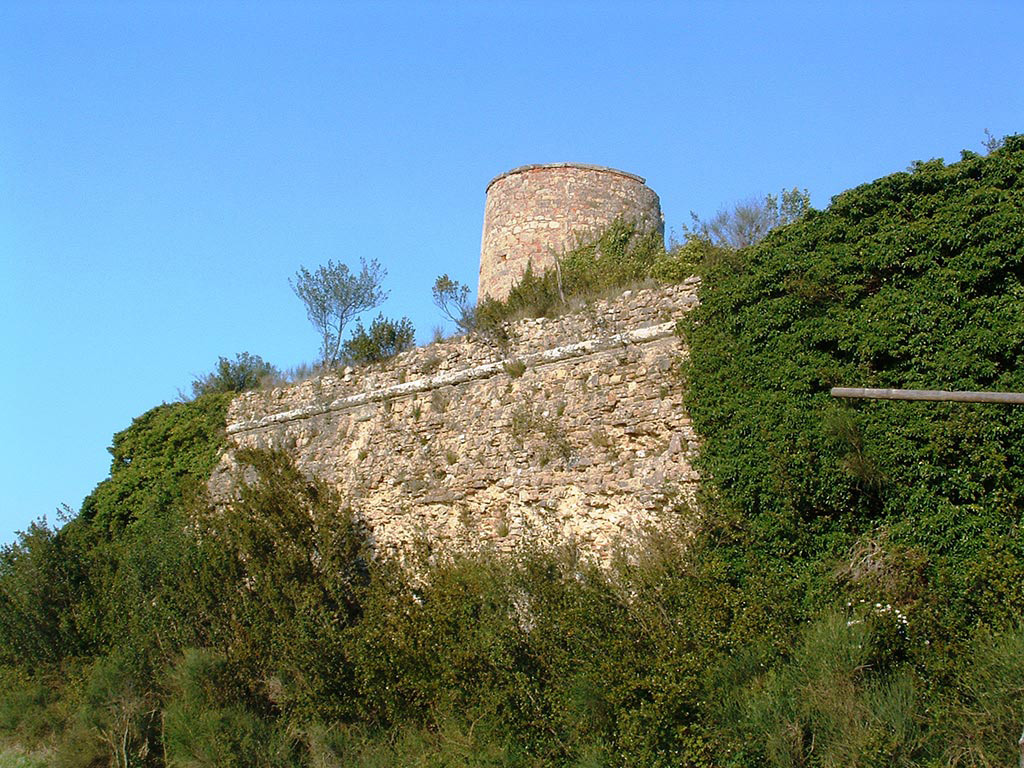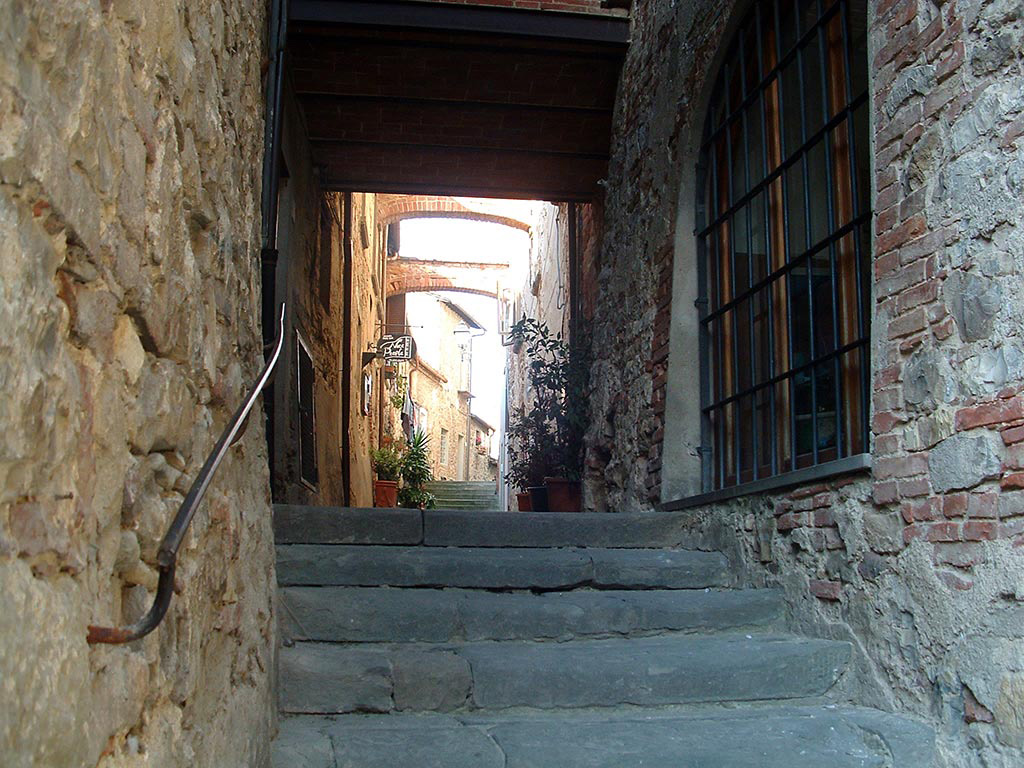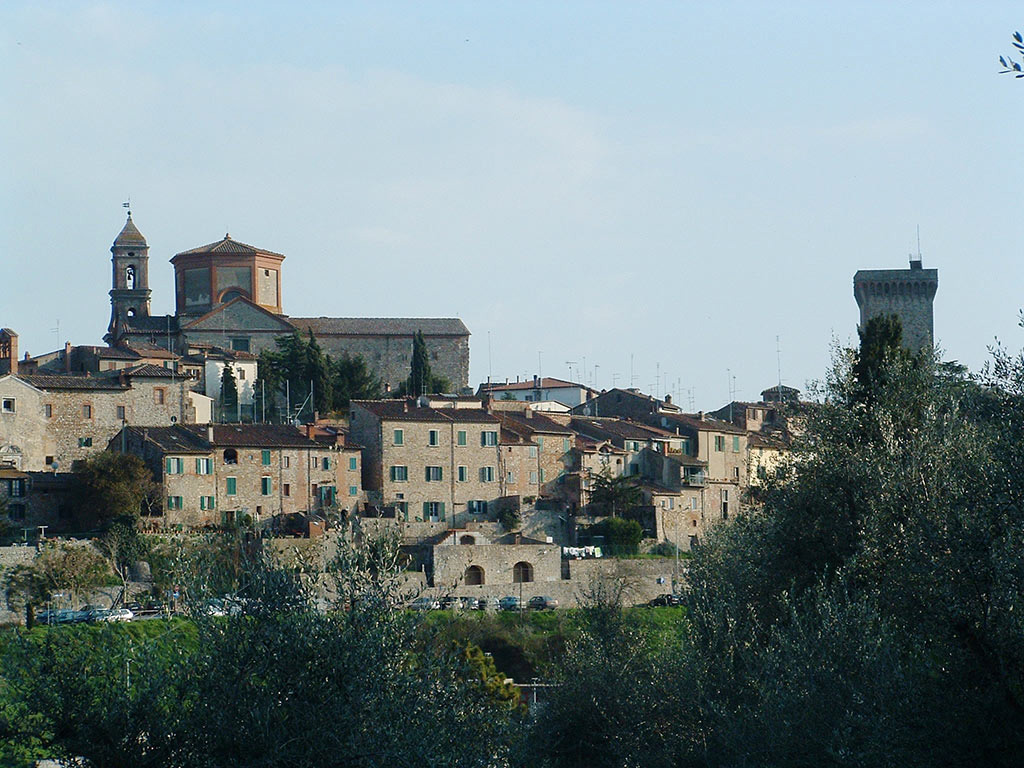Etruscans and Romans
Like many Tuscan towns, Lucignano also boasts Etruscan origins, as proven by the numerous findings that have turned up both from the immediate vicinity of the village and from the surrounding countryside.
The archaeologist Francesco Gamurrini, during the 19th century, discovered two necropolis:
one in locality Poggio dei Morti (Dead’s hill) - Casalta whose hypogeal chambers gave many urns made of travertine and pietra fetida, gold and silvery jewellery, Attic and Etruscan vases with red figures, which are conserved at the Archaeological Museum of Arezzo, and a cinerary statue now at the British Museum. The other necropolis of Moscino yielded buccheri, Corinthian vases, four cinerary urns of stone, a kylix with black figures, and other objects that made it possible to date this necropolis between 7th and 6th centuries BC, and are now conserved in the Archaeological Museum in Siena.
The Roman period, rather poor with material evidence, has left its mark in place names and in Literature.
In fact, the name Lucignano, in ancient times Lucinianum or Licinianum, derives from the Roman Licini family, who were the owners of vast agrarian properties in this land.
Tradition also recalls a triangular tower known as Torre Sillana, in the place where today stands the Collegiate Church, which Silla ordered to build during the wars against Marius. A memorial stone, which recalled Silla and the fortification that he commissioned, supposedly dates to this period but was destroyed during the 17th century.
The oldest written records of Lucignano seem to date indeed to the time of the Romans, and are reported in Book V of Strabo’s Geographia and Book XV of Pliny the Elder’s Historia Naturalis, praising the high quality of the oil of our hills.
